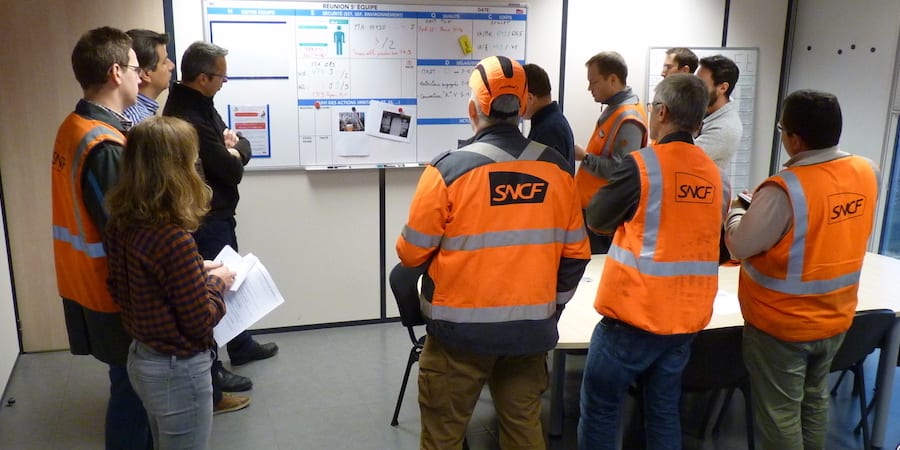
Nick Katko explains the benefits of lean accounting
FEATURE - Without a solid accounting function no transformation can ever succeed. The author explains why lean accounting should be part of your strategy.
Words: Nick Katko, lean accounting expert and Senior Consultant, BMA Inc.
Lean is a multi-faceted business strategy, with a primary focus on employees and learning. Through the use of various lean tools, practices and methods, employees learn to master their work, solve the right problems and help an organization learn how to doing things tomorrow it cannot do today. That’s why we should always talk about “lean thinking” as opposed to “doing lean”.
Lean also changes the way an organization thinks about making money. The financial impact of a lean strategy is well known – all we need to do is look at the many companies that have been successful in their transformations. We know that focusing an organization on customer value will result in revenue growth, and that the deployment of lean tools and techniques that create flow and eliminate waste will result in improved cost management. These are the economics of lean.
But before any of that appears, a fundamental shift must occur in what and how an organization measures itself operationally and financially. Financial management must be aligned with the economics of lean, and that’s what lean accounting is all about.
To achieve success, a lean organization must develop an effective and efficient accounting function that complements its financial accounting system to provide a knowledge base for effectively making decisions about the future (this is critical because the focus of financial accounting is on past activity). Lean accounting makes relevant information available to decision makers on a timely basis.
In a broader context, lean accounting is a financial learning system for the entire organization, not just the accounting function. Because the economics of lean changes the relationships between operations and financial numbers, the whole business must learn the new relationships and incorporate the dynamic context of these relationships in their financial analysis.
Now, here’s the challenge: the financial impact of lean is neither direct nor immediate, which is counter to traditional short-term business financial thinking. A lean organization considers employees and time to be its two most important assets. Helping employees to learn how to better use an organization’s time to deliver value to customers is a long-term strategy. This is accomplished though continuous improvement, which focuses the employees’ attention on maximizing value-added activities and eliminating non-value activities. Lean accounting uses this information to calculate value stream capacity and incorporate the impact of capacity into all financial analyses.
Internal financial management in a lean organization must be focused around the flow of money, rather than externally-reported financial results. External financial results can be impacted by compliance with accounting reporting requirements, which most people in a business do not understand. By focusing financial analysis around the flow of money, all functions in an organization can perform consistent, reliable financial analyses that will result in long-term financial growth.
All functions in a lean company must learn and understand the impact of their particular financial decisions based around the correlations between lean operational performance, resource capacity and financial numbers.
THE BENEFITS OF LEAN ACCOUNTING
The primary benefit of lean accounting is improved financial management practices. Lean accounting creates standard work for organizational financial analysis through the employment of three general principles:
- The financial impact of any decision is based on the impact on total value stream profitability. Value streams are the profit centers of a lean enterprise and all financial analysis should be performed at this level.The dynamic cause and effect relationships between value stream operating performance, capacity and profitability are real and can be modeled financially.
- Stop using cost allocations! Most cost allocations have a level of subjectivity in them, such as product costs in manufacturing companies. Other cost allocations are an attempt to make a fixed cost variable by linking it to units or services produced. Using rates in financial analysis is dangerous because they can make it look like costs are decreasing, when in reality they are not changing. It is critical to eliminate cost allocations and understand the relationships between operating performance, capacity and costs using problem-solving practices. This is done by creating an environment in which true root cause analysis can be conducted on cost behavior and operational solutions can be put in place to achieve the desired cost behavior.
- The lean idea that eliminating waste creates time – the time spent on waste is now available to create value (often described as “creating capacity”). Lean accounting incorporates this into financial management practices: the creation of time has no financial impact, but how the business uses that time does. A lean business can use this newly-created capacity to sell more products or services, and the financial impact will be increasing revenue without corresponding increases in costs.
A REAL-LIFE EXAMPLE
Here is a simple real-life example of the benefits of using lean accounting practices for financial management and analysis. It is the story of an Italian company I have been supporting since March 2017. We started by creating box scores in one value stream (heating elements), which they then began to use for financial analysis.
A customer recently requested a quote for a custom heating element product. The price the customer wanted was less than the standard cost of the product. In the past, the sales team would have not accepted this order because the product would “lose money” on a standard cost perspective after about one week’s worth of e-mail discussion between business functions.
Instead, the Corporate Controller assembled a cross-functional team of people from operations, engineering, purchasing, sales and finance to look at this opportunity using the box score. First, the sales representative explained the opportunity – the sales volume, the specific component parts required and the sales price. The total revenue of this opportunity was calculated by Finance.
Next, the engineering representative discussed the functionality of the component parts and it was determined that the customer’s product specifications would be achieved. A bill of material was created. Purchasing then derived the cost of the new components from the bill of material, and total material cost was calculated by Finance.
Operations asked sales many questions about the total volume of the order over the expected timeframe of delivery and it was determined that they had available capacity to produce the order. Because capacity was available, there was no additional labor or machine costs associated with this order.
Finance calculated the actual profitability of the order: the total revenue less the total material cost, and the consensus of the team was the order should be accepted at the price the customer desired.
Financial analysis in lean accounting deals in actual revenue, costs and profitability based on the economics of lean, rather than artificial rates based on assumptions. Lean accounting will unlock the financial potential of a lean strategy though better financial analysis and decision-making.
THE AUTHOR

Read more


FEATURE – There is more to logistics than an ancillary process that supports the rest of the company. But then, why do we never have a plan for it, like we do for manufacturing?


NOTES FROM THE GEMBA - We follow the author on a visit to a train maintenance center in France. Through practical examples and pictures from the gemba, she explains how the center is transforming itself.



INTERVIEW – At the recent UK Lean Summit, we met the Head of Student Services of an English high school. We asked her about the interesting work the school is doing to improve the delivery of education to students with special needs using lean thinking.


FEATURE – Effectively applying just-in-time and achieving flow is impossible without leveling production first. Yet, most companies seem to think this is impossible because demand is so variable… but is it really?

